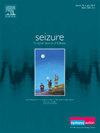Intensive treatment course to identify pseudoresistant epilepsy and expedite surgery referrals - A prospective intervention study
IF 2.7
3区 医学
Q2 CLINICAL NEUROLOGY
引用次数: 0
Abstract
Introduction
A significant proportion of patients do not achieve seizure freedom despite treatment attempts with two different anti-seizure medications (ASMs). A subset may not truly have drug-resistant epilepsy (“pseudoresistant”), while rapid referral of patients with genuine drug-resistant epilepsy to surgery is mandated. This study was designed to evaluate a structured and intensive treatment course with the objective of promptly identifying cases of pseudoresistance and accelerating the time to referral to epilepsy surgery.
Methods
From May 2017 to February 2021, this prospective interventional study recruited consecutive adult patients with epilepsy treated at Odense University Hospital, Denmark, who had at least one seizure per month despite attempts with two or more ASMs. The predefined endpoint was improvement in seizure activity. Secondary endpoints were referral to epilepsy surgery, patients with pseudoresistance, and achievement of seizure freedom.
Results
Of the 41 patients enrolled, 39 completed the study. The intervention comprised a initial seizure documentation, specialist evaluation, EEG monitoring as required, and an individualized plan for intensive treatment. The plans included e.g., optimization of medical treatment, seizure classification, and improvement of medication adherence. The subsequent intensive treatment (1–4 contacts/month; 1–13 contacts in total) was led by epilepsy nurses that executed the treatment plan. The intervention significantly improved seizure control, with 41.1 % of patients achieving seizure freedom and an additional 17.8 % of patients experiencing reduced seizure frequency. One-third of the patients turned out to be “pseudoresistant” due to various reasons, including wrong classification of seizures and inadequate adherence to ASMs. Ten patients were offered a referral for epilepsy surgery at the end of the study after an average of 34.8 weeks.
Conclusion
This study demonstrates the efficacy of a standardized, intensive treatment course involving epilepsy nurses in identifying and managing patients with persisting seizures despite treatment attempts with two ASMs. This approach led to favourable seizure outcomes and facilitated expedited referrals for epilepsy surgery where appropriate.
识别假性难治性癫痫并加快手术转诊的强化治疗课程 - 一项前瞻性干预研究。
简介:有相当一部分患者在尝试使用两种不同的抗癫痫药物(ASMs)治疗后仍无法摆脱癫痫发作。一部分患者可能并非真正的耐药性癫痫("假性耐药"),而真正的耐药性癫痫患者必须迅速转诊接受手术治疗。本研究旨在评估一种结构化强化治疗方案,目的是及时发现假性耐药病例,加快转诊至癫痫手术的时间:从2017年5月到2021年2月,这项前瞻性干预研究连续招募了在丹麦欧登塞大学医院接受治疗的成年癫痫患者,这些患者在尝试了两种或两种以上的ASM后,每月仍至少有一次癫痫发作。预设终点是癫痫发作活动有所改善。次要终点是转诊至癫痫手术、假性抵抗患者和实现癫痫自由发作:在 41 名入选患者中,39 人完成了研究。干预措施包括初始癫痫发作记录、专家评估、必要的脑电图监测以及个性化的强化治疗计划。这些计划包括优化药物治疗、癫痫发作分类和改善服药依从性等。随后的强化治疗(每月 1-4 次接触,共 1-13 次接触)由执行治疗计划的癫痫护士负责。干预措施明显改善了癫痫发作控制,41.1% 的患者摆脱了癫痫发作,另有 17.8% 的患者减少了癫痫发作频率。由于各种原因,包括对癫痫发作的错误分类和对 ASMs 的不充分依从,三分之一的患者变成了 "假性耐药"。研究结束时,10 名患者在平均 34.8 周后被转诊接受癫痫手术治疗:这项研究表明,由癫痫护士参与的标准化强化治疗课程对于识别和管理在尝试两种 ASMs 治疗后仍有癫痫持续发作的患者非常有效。这种方法可取得良好的癫痫发作疗效,并有助于在适当的情况下加快癫痫手术的转诊。
本文章由计算机程序翻译,如有差异,请以英文原文为准。
求助全文
约1分钟内获得全文
求助全文
来源期刊

Seizure-European Journal of Epilepsy
医学-临床神经学
CiteScore
5.60
自引率
6.70%
发文量
231
审稿时长
34 days
期刊介绍:
Seizure - European Journal of Epilepsy is an international journal owned by Epilepsy Action (the largest member led epilepsy organisation in the UK). It provides a forum for papers on all topics related to epilepsy and seizure disorders.
 求助内容:
求助内容: 应助结果提醒方式:
应助结果提醒方式:


